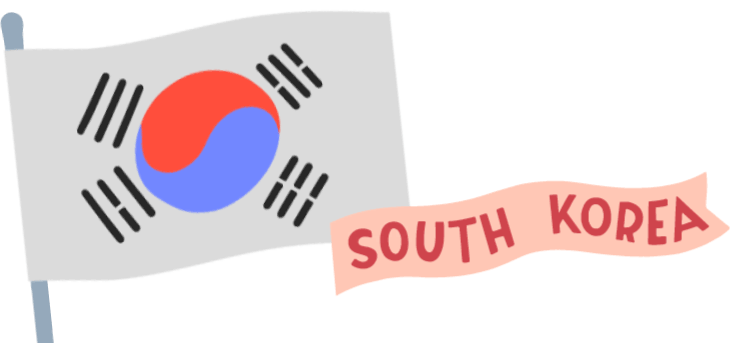Busan dialect phrases to learn
South Korea has nine provinces, and each province has its own dialect. The Seoul dialect, also known as the Gyeonggi dialect, is the standard Korean that you hear the most often.
This article focuses on the Busan dialect, also known as Busan satoori. Busan is the second-largest city in South Korea, and it’s part of the Gyeongsang province. Here are 10 Busan dialect phrases to learn so that you can relate to your Busan-born oppas when they start speaking in dialect whenever they get hyped up about something.
Table of Contents [hide]
- Busan dialect phrases to learn
- 1. 마 (Hey)
- 2. 와? (Why?)
- 3. 뭐하노? (What are you doing?) & 뭐라카노? (What did you say?)
- 4. 밥 뭇나? (Have you eaten?)
- 5. 가가 가가 (Is that the person?)
- 6. 맞나/그랬나? (Really?)
- 7. 살아있네 (Alive/Awesome)
- 8. 감사합니데이 (Thank you)
- 9. 개안타 (It’s alright)
- 10. 가시나 (That girl)
- 11. 엄식 (Food)
- Busan satoori phrases that will help you relate to your Busan oppa
1. 마 (Hey)
The word “마” (ma) in Busan dialect has the same meaning as the word “야” (ya) in standard Korean. You’ll commonly hear this in dramas when characters call out to each other. In English, it means “hey”.
Both 마 and 야 are used in an informal setting. It’s rude if you use them when speaking to elders.
마/야 is often used among friends. Instead of addressing them by name, you can simply use 마/야 to get their attention.
2. 와? (Why?)

Image credit: BTS (방탄소년단)
“왜” (wae) translates to “why” in English. 왜 is used in standard Korean.
In Busan, “와” (wa) is used instead. It can be a little strange if you are used to the standard Korean, because “와” actually means “come” in standard Korean.
3. 뭐하노? (What are you doing?) & 뭐라카노? (What did you say?)

Image adapted from: V LIVE
“뭐해?” (mwo-hae) translates to “What are you doing?” in English. This question is used in an informal setting. To use it in a formal setting, add “요” (yo) at the end of question, which gives you “뭐해요?” (mwo-hae-yo)
In Busan dialect, “뭐하노” (mwo-ha-no) is used instead.
Listen to Jungkook yell “뭐하노!” in Run BTS! episode 112, when he copied RM’s answer and it turned out to be wrong.
뭐하노 can be easily confused with 뭐라카노 (mwo-ra-ka-no), as both sound similar. However, they have completely different meanings.
“뭐라카노” means “What did you say?” in the Busan dialect. In standard Korean, 뭐라고 (mwo-ra-go) is used instead.
BTS released a song named Paldogangsan, also known as Satoori Rap. In the song, the members rap in Gyeongsang, Jeollado, and Seoul dialects. Gyeongsang dialect encompasses both Busan and Daegu dialects, but do take note that there are slight differences between the two.
Pay attention to Jungkook and Jimin’s parts in the song if you would like to listen to how different the Busan dialect sounds compared to standard Korean. The question “뭐라카노?” is used in the song. Listen to Paldogangsan and see if you can identify it!
4. 밥 뭇나? (Have you eaten?)

Image adapted from: V LIVE
In standard Korean, “밥 먹었어?” (bap-meog-geot-seo) is used to ask if someone has eaten.
In Busan dialect, “밥 뭇나” (bap-mut-na) or “밥 먹었나” (bap-meog-geot-na) is used instead. Both have the same meaning and can be used interchangeably.
A few years ago, V and Jimin from BTS did a mini V LIVE episode on the differences between Gyeongsang dialect and standard Korean. V is from Daegu and Jimin is from Busan.
In the episode, V can be heard asking if Jimin has eaten in Gyeongsang dialect. As mentioned earlier, both Busan and Daegu are in the Gyeongsang region, and therefore, Busan and Daegu dialects are similar, with some small differences.
밥 뭇나 is used in both Busan and Daegu.
5. 가가 가가 (Is that the person?)

Image adapted from: ALL THE K-JAM 올더케이잼
You can’t say you’re learning the Busan dialect if you don’t know this iconic question – “가가가가?” (ga-ga-ga-ga)
It’s a question formed entirely from the word 가 (ga). In standard Korean, the question goes “걔가걔니?” (gae-ga-gae-ni).
In English, it basically means “Is that the person?”
There is another variation of the question, this time with five characters: “가가 가가가?” It translates to “Is that person Mr Ga?”
You can hold an entire conversation in Busan dialect using just 가, which is fascinating. If you would like to listen to how the conversation can go, you should watch episode 216 of Video Star.
6. 맞나/그랬나? (Really?)

Image credit: BTS (방탄소년단)
In standard Korean, there are several ways to ask “Really?”
You can use 정말 (jeong-mal), 그래 (geu-rae) or 진짜 (jin-jja).
In Busan dialect, 맞나 (man-na) is often used. 그랬나 (geu-raet-na) can be used as well.
7. 살아있네 (Alive/Awesome)
살아있네 (sal-ah-it-ne) is a commonly used term in Busan dialect.
In Busan dialect, 살아있네 has 2 meanings – “alive” and “awesome”.
The literal meaning of 살아있네 is “alive”. When used as a slang word, it means “this is awesome”.
8. 감사합니데이 (Thank you)

Image credit: 베스티 – BESTie
In standard Korean, 감사합니다 (gam-sa-hab-ni-da) is used to say “thank you”.
In Busan dialect, 감사합니데이 (gam-sa-hab-ni-de-ee) is used instead. “니다” (ni-da) is replaced with “데이” (de-ee).
There are a few other sentences that end with “데이” in the Busan dialect. Some examples include 죄송합니다 (chui-song-hab-ni-da) and 오랜만입니다 (oh-raen-man-ib-ni-da).
죄송합니다 means “I’m sorry” in standard Korean. In Busan dialect, it becomes 죄송합니데이.
As for 오랜만입니다, which means “It’s been a long time” in standard Korean. However, it becomes 오랜만입니데이 in Busan dialect.
9. 개안타 (It’s alright)
“개안타” (gae-an-ta) means “I’m alright” in Busan dialect.
It means 괜찮아 (gwaen-chan-ah) in standard Korean.
10. 가시나 (That girl)

Image credit: @miyayeah
Because of Sunmi’s iconic song Gashina, you may already be familiar with this term.
“가시나” (ga-shi-na) refers to “young girl” or “that girl” in Busan dialect.
However, the term can have a negative connotation, and should be used only if you’re comfortable with the person you’re talking to.
In Sunmi’s song, there’s a line that goes “왜 예쁜 날 두고 가시나?” (wae ye-beun nal du-go ga-shi-na), which translates to “Why are you leaving a pretty girl behind?”
However, 가시나 has two different meanings in the song. There is a line that goes “내 몸에 가시가 났다”, which means “thorns grew on my body”. So, it can also refer to “thorns”.
11. 엄식 (Food)

Image credit: @kimtong.co.kr
In Busan dialect, 음식 (eum-shik), which means “food” in standard Korean, is pronounced “엄식” (eom-shik) instead.
Also, there are several food items that are pronounced differently in Busan. For example, kimchi is pronounced 짐치 (jim-chi) in Busan dialect.

Image credit: @sosotaste
두부 (du-bu), which means “tofu” in standard Korean, is pronounced 조포 (jo-po) in Busan dialect.
Busan satoori phrases that will help you relate to your Busan oppa
Hopefully, this article has helped you learn more about the Busan dialect! These 11 phrases are good to know for beginners, but don’t stop here – you can learn more about the dialect online and expand your knowledge of the Korean language.
Also check out:
- 43 popular Korean slang in 2020 that will make you an insider instantly
- 15 Korean phrases for shopping you need to know
- 15 romantic Korean phrases to know besides saranghaeyo
- 16 Korean phrases for travelling and getting around Seoul
- 15 Korean phrases for ordering food at a restaurant
Cover image adapted from: BTS (방탄소년단)





